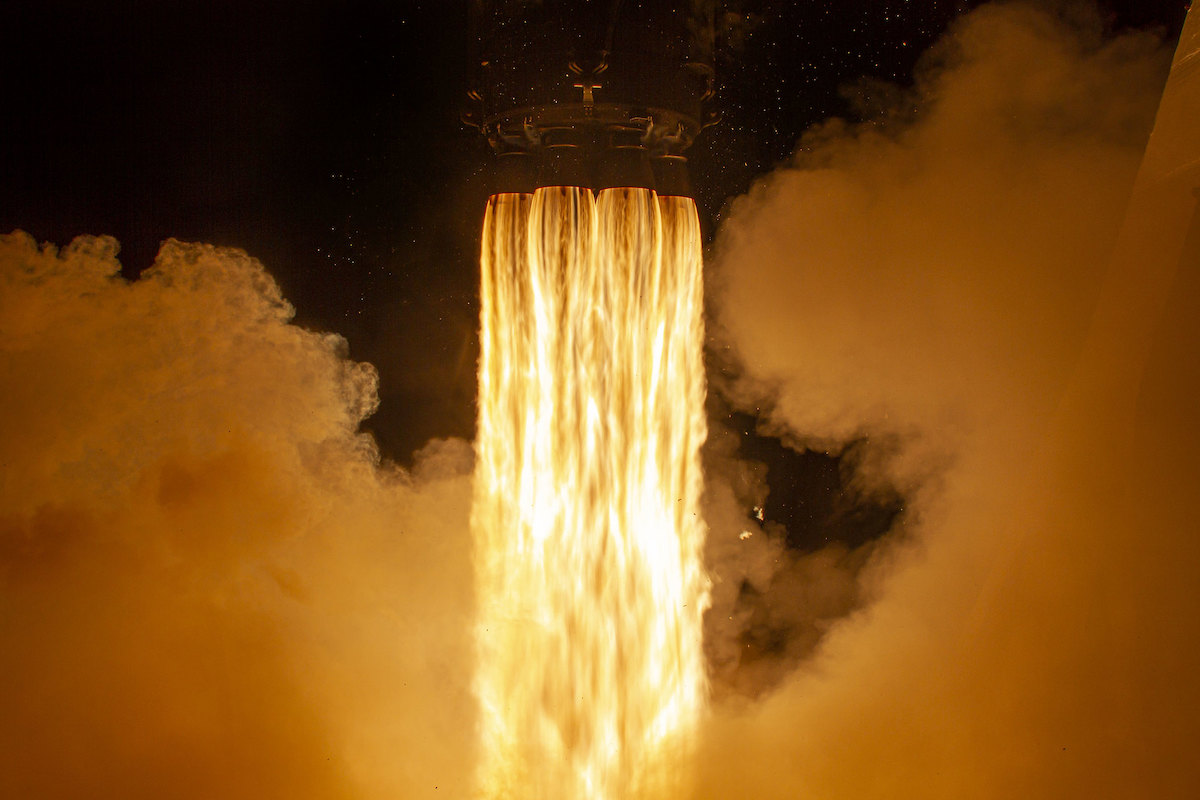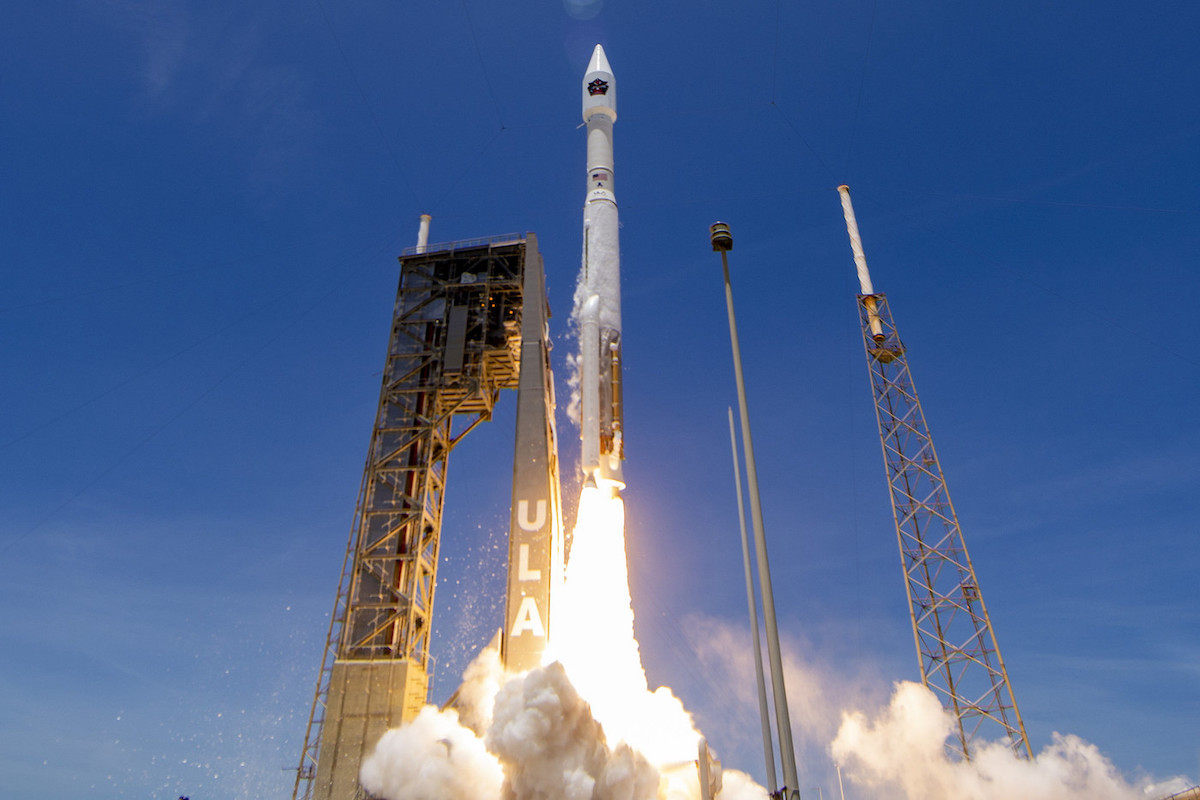
More than three-quarters of the launches from Florida’s Space Coast so far this year have deployed SpaceX’s Starlink internet satellites, but the focus will shift to other customers in June. Five rocket flights are scheduled to lift off from the spaceport next month for the U.S. Space Force, NASA, and commercial companies.
“June is going to be extremely busy for us,” said Lt. Col. Brian Eno, commander of the 1st Range Operations Squadron, part of Space Launch Delta 45, which oversees the Eastern Range at Cape Canaveral Space Force Station.
The Space Force’s 45th Space Wing was redesignated Space Launch Delta 45 last month as part of a reorganization of units operating under the umbrella of the nation’s newest military service.
The launch rate to start 2021 is a record for orbital missions from Cape Canaveral. The cadence has largely been driven by SpaceX’s rapid deployment of Starlink internet satellites.
In an interview, Eno said the pace of launches at Cape Canaveral will continue through the rest of 2021.
“We’re on an extremely fast pace, and it’s going to continue all the way through the rest of the year,” he said.
A spokesperson for Space Launch Delta 45 said they currently expect 47 launches on the Eastern Range this calendar year. In January, range officials predicted 53 launches this year from Cape Canaveral Space Force Station and the neighboring Kennedy Space Center.
There were 31 rocket launches from the Florida spaceport in 2020, including 30 orbital missions and one high-altitude test flight of SpaceX’s Crew Dragon capsule. The 30 space missions launched from Florida last year broke the previous record of 29 successful orbital launches set in 1966.
The Space Force has started initiatives to make the Eastern Range more nimble as commercial users drive up the launch rate. Range officials have said they want to make the ground infrastructure at Cape Canaveral more automated and more responsive to rocket companies.
It used to take up to two days to reconfigure the range between rocket launches from different pads. In some cases, that can now be done in as little as a few hours. Space Force officials are eager to demonstrate the rapid launch turnaround capability, but the opportunity hasn’t come yet.
Here’s an overview of the five launches planned from Cape Canaveral next month:
- June 3 at 1:29 p.m. EDT: Falcon 9/CRS-22 from pad 39A
- June 6 at 12:25-2:26 a.m. EDT: Falcon 9/SXM 8 from pad 40
- June 17 at 6:00-9:00 p.m. EDT: Falcon 9/GPS 3-5 from pad 40
- June 23: Atlas 5/STP-3 from pad 41
- Late June: Falcon 9/Transporter 2 from pad 40
The June launch calendar will begin with a SpaceX mission set to blast off at 1:29 p.m. EDT (1729 GMT) next Thursday, June 3, when a Falcon 9 rocket — powered by a brand new first stage — is set to launch from pad 39A at NASA’s Kennedy Space Center with a Dragon cargo ship heading to the International Space Station.
The Dragon supply ship will haul more than 7,300 pounds (about 3.3 metric tons) of crew provisions, spare parts, and experiments to the space station. Two new power-generating solar array wings are stowed inside Dragon’s unpressurized trunk for delivery to the station, where astronauts will help install the solar panels next month to augment the lab’s electrical system.
Another Falcon 9 rocket is scheduled for launch from pad 40 at Cape Canaveral Space Force Station as soon as June 6 during a roughly two-hour launch window opening at 12:25 a.m. EDT (0425 GMT) with the SXM 8 radio broadcasting satellite for SiriusXM.
Three more launches are scheduled from Cape Canaveral in the second half of June, beginning with the liftoff of the Space Force’s next GPS navigation satellite June 17. The launch is expected to occur some time between 6 p.m. and 9 p.m. EDT (2200-0100 GMT), according to a Space Force spokesperson.
That mission will be the first SpaceX launch of an operational U.S. military satellite to employ a previously-flown first stage booster. More than half of SpaceX’s 119 Falcon 9 launches to date have flown with reused boosters, all successfully.

An Atlas 5 rocket from United Launch Alliance is scheduled to blast off June 23 from pad 41 at Cape Canaveral. That mission, sponsored by the U.S. military’s Space Test Program, will deploy two military spacecraft into a geosynchronous orbit more than 20,000 miles over the equator.
Another SpaceX launch will close out the month, when a Falcon 9 rocket fires into orbit on a rideshare mission with numerous small satellites from U.S. and international customers. The mission, known as Transporter 2 and expected in the last week of June, follows SpaceX’s first “Transporter” rideshare launch in January, which delivered 143 small satellites to orbit.
SpaceX on the verge of Starlink launches from West Coast
Thirteen of the 17 orbital-class launches from Cape Canaveral so far this year have been primarily dedicated to launching SpaceX’s Starlink spacecraft. Sixteen of the orbital missions this year from Florida’s Space Coast have been performed by SpaceX, and one by ULA.
SpaceX has launched more than 700 Starlink satellites since Jan. 1, and deployed 1,737 Starlink spacecraft in total, including prototypes and failed satellites no longer in the active fleet.
But the launch of the 60 newest Starlinks Wednesday could be the last dedicated Starlink mission to take off from Florida’s Space Coast, at least for a while. The next Falcon 9 rocket fully loaded with Starlink satellites is scheduled to launch in July from Vandenberg Space Force Base, California.
Wednesday’s launch should give SpaceX enough satellites to complete deployment of the first layer, or “shell,” of the Starlink network. The first phase of the Starlink system includes 4,408 satellites spread into numerous orbital planes in five orbital shells at different inclinations and at slightly different altitudes.
Once the 60 quarter-ton satellites launched Wednesday arrive at their operational altitude of 341 miles (550 kilometers), SpaceX should have more than the 1,584 spacecraft required to to populate the 341-mile-high Starlink shell at an inclination of 53 degrees.
The completion of the first Starlink “shell” will enable the network to provide high-speed, low-latency internet services to lower latitudes, such as the southern United States. The partial deployment of satellites into the first orbital shell initially provided service over northern regions of the United States, Canada, and Europe, as well as higher-latitude regions in the southern hemisphere.
SpaceX has regulatory approval from the Federal Communications Commission to eventually launch and operate up to 12,000 internet relay satellites.
Future Starlink launches will deliver satellites to higher-inclination orbits, including two polar shells inclined 97.6 degrees to the equator, a layer in 70-degree inclination orbits, and another group at 53.2 degrees, slightly off-angle from the 53-degree shell that is nearly full.
A SpaceX regulatory filing with the FCC requesting authority to operate rocket telemetry transmitters suggests the company plans six Starlink missions from Vandenberg through January 2022, beginning as soon as July. The one launch per month cadence matches what industry sources have previously told Spaceflight Now.
The FCC applications, which include data about the location of SpaceX’s booster recovery ship, appear to suggest the company plans to launch the initial Starlink missions from Vandenberg into 70-degree inclination orbits.
There are no drone ships for booster landings currently on the West Coast, but SpaceX could transfer one of the two landing vessels based in Florida to a California port. SpaceX is also readying a third drone ship for its debut, perhaps later this year.
Email the author.
Follow Stephen Clark on Twitter: @StephenClark1.
